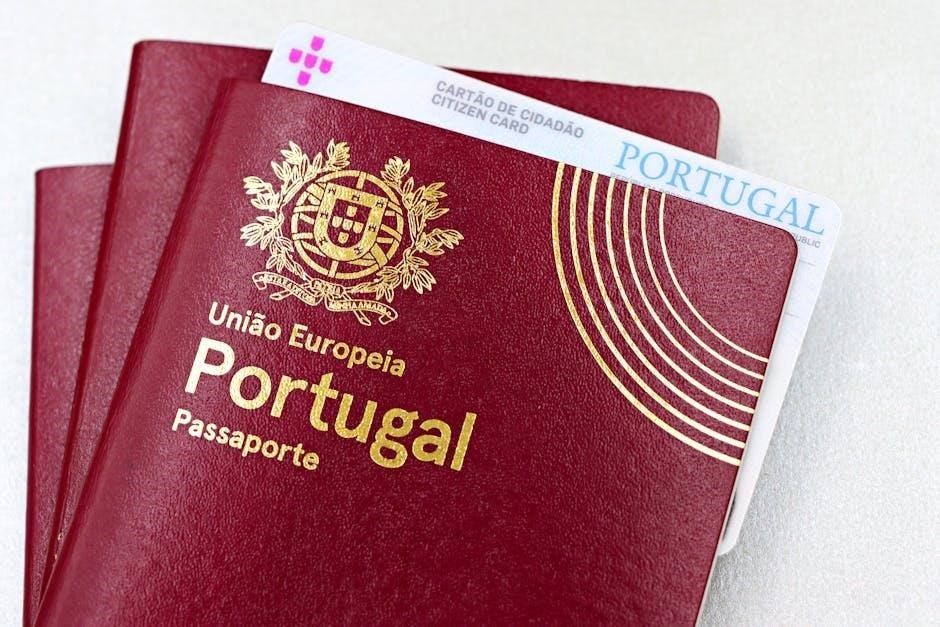
ID Checking Guide 2023: Best Practices
In our digital age, identity verification is the cornerstone of secure online interactions․ This guide explores methods and current best practices for businesses and agencies validating identities․ It is crucial to protect against identity theft and fraud in financial transactions․
The Importance of Identity Verification
In today’s digital landscape, identity verification is paramount, serving as the initial safeguard for financial assets and sensitive information․ As identity theft and fraud become increasingly sophisticated threats, robust verification processes are essential for both individuals and organizations․ Confirming that users are who they claim to be is crucial for maintaining trust and security in online interactions․
Identity verification acts as a deterrent against malicious actors, preventing them from gaining unauthorized access to accounts, systems, and data․ By implementing effective verification measures, businesses can mitigate risks associated with fraud, money laundering, and other illicit activities․ This not only protects the organization’s assets but also safeguards the privacy and security of its customers․
Furthermore, identity verification plays a vital role in regulatory compliance․ Many industries are subject to strict regulations regarding customer identification and due diligence․ Implementing robust verification procedures helps organizations meet these requirements and avoid potential penalties․ In essence, identity verification is not merely a security measure; it is a fundamental business practice that fosters trust, protects assets, and ensures compliance․
Methods of Identity Verification

Various methods exist to verify identity, each offering unique strengths and weaknesses․ Understanding these methods is crucial for selecting the most appropriate approach for a given situation․ Common techniques include email verification, where a user’s email address is confirmed through a link or code․ This provides a basic level of assurance that the user has access to the email account․
Phone verification involves sending a code to a user’s phone number, which they must then enter to confirm their identity․ This method adds an extra layer of security by leveraging the user’s mobile device․ Document verification requires users to submit copies of government-issued IDs, such as passports or driver’s licenses․ These documents are then analyzed to confirm their authenticity and match the user’s information․
Biometric verification utilizes unique biological traits, such as fingerprints or facial recognition, to identify individuals․ This method offers a high level of security but may require specialized hardware or software․ The choice of verification method depends on the specific risks and requirements of the application, as well as the user’s convenience and privacy considerations․ Employing a combination of methods can provide a more robust and reliable verification process․
Multiple Verification Methods
Implementing multiple verification methods, often referred to as multi-factor authentication (MFA) or layered security, significantly enhances the robustness of identity verification processes․ Relying on a single method creates a single point of failure, making the system vulnerable to various attacks․ By combining different verification techniques, the overall security posture is strengthened, making it more difficult for fraudsters to gain unauthorized access․
For example, pairing email verification with phone verification adds an extra layer of assurance․ Even if an attacker compromises the user’s email account, they would still need access to the user’s phone to complete the verification process․ Similarly, combining document verification with biometric authentication provides a high level of confidence in the user’s identity, as it requires both a physical document and a unique biological trait․
The selection of appropriate verification methods should be based on the specific risks and requirements of the application․ High-risk transactions or access to sensitive data warrant the use of multiple, strong verification methods․ It is essential to carefully consider the user experience when implementing MFA, as overly complex or cumbersome processes can lead to user frustration and abandonment․ Striking a balance between security and usability is crucial for successful implementation․
Email Verification
Email verification is a widely used method for confirming the authenticity of an email address provided by a user during registration or account creation․ It typically involves sending an automated email to the provided address containing a unique verification link or code․ The user is required to click on the link or enter the code on the website or application to confirm their ownership of the email address․
While relatively simple to implement, email verification serves several important purposes․ Firstly, it helps to prevent users from providing fake or disposable email addresses, ensuring that the organization has a valid means of communication․ Secondly, it reduces the risk of spam and fraudulent accounts by verifying that the user has access to the email address they claim to own․
However, email verification alone is not a foolproof method of identity verification․ Attackers can still create temporary email addresses or compromise existing accounts to bypass this check․ Therefore, it is recommended to combine email verification with other stronger methods, such as phone verification or document verification, to enhance the overall security of the identity verification process․ Furthermore, it’s crucial to implement measures to prevent automated email generation and abuse․
Phone Verification
Phone verification adds an extra layer of security by confirming a user’s identity through their mobile phone number․ This method typically involves sending a unique code via SMS to the user’s phone, which they then enter on the website or application to verify their number․ Phone verification is a valuable tool in combating fraud and ensuring the legitimacy of user accounts․
One of the primary benefits of phone verification is its ability to deter bots and fake accounts․ Unlike email addresses, phone numbers are generally tied to a specific individual, making it more difficult for malicious actors to create numerous fraudulent accounts․ Additionally, phone verification can be used for two-factor authentication, providing an extra layer of security for sensitive transactions or account access․
However, it’s essential to acknowledge the limitations of phone verification․ Spoofing techniques can allow attackers to mask their actual phone number, potentially bypassing this security measure․ Furthermore, some users may be hesitant to provide their phone number due to privacy concerns․ Therefore, it is best practice to combine phone verification with other methods, such as email and document verification, to achieve a robust identity verification process․
Document Verification
Document verification involves confirming a user’s identity by examining government-issued identification documents, such as passports, driver’s licenses, or national ID cards․ This method plays a crucial role in establishing trust and preventing fraud, particularly in high-risk transactions or regulated industries․ The process typically involves users submitting a digital copy of their document, which is then analyzed to verify its authenticity and the user’s identity․
Advanced document verification systems employ optical character recognition (OCR) to extract data from the document, cross-referencing it with databases to ensure its validity․ They also utilize image analysis techniques to detect signs of tampering or forgery․ This meticulous approach helps prevent fraudulent documents from being used to impersonate individuals or gain unauthorized access․
While document verification offers a high level of assurance, it’s essential to acknowledge its limitations․ Skilled forgers can create convincing fake documents, and the verification process can be time-consuming, potentially impacting user experience․ Therefore, it’s best practice to combine document verification with other methods like biometric checks to enhance security and efficiency․
Biometric Verification
Biometric verification employs unique biological traits to confirm an individual’s identity, offering a robust layer of security compared to traditional methods․ Common biometric techniques include fingerprint scanning, facial recognition, and iris scanning․ These methods analyze distinct physical characteristics, creating a digital template that is compared against a previously stored record during authentication․
The increasing sophistication of biometric technology has made it a preferred choice for secure identity verification․ Facial recognition, for example, can now accurately identify individuals even with variations in lighting, pose, or minor changes in appearance․ Fingerprint scanning remains a reliable method, while iris scanning provides an even higher level of accuracy due to the complexity of iris patterns․
Despite its advantages, biometric verification also presents challenges․ Privacy concerns surrounding the collection and storage of sensitive biometric data are paramount․ It’s crucial to implement stringent security measures to protect this information from unauthorized access․ Additionally, biometric systems can be susceptible to spoofing attacks, where individuals attempt to impersonate others using fake fingerprints or facial masks․ Therefore, robust anti-spoofing measures are essential to ensure the integrity of biometric verification processes․
Best Practices for Digital Identity Verification
Implementing robust digital identity verification requires a multi-faceted approach․ Start by utilizing multiple verification methods․ Combining email, phone, document, and biometric checks significantly enhances security; This layered approach makes it harder for fraudsters to bypass the verification process․ For example, pair document verification with a liveness check via facial recognition․
Next, prioritize user data security․ Employ encryption and secure storage to protect sensitive information collected during verification․ Comply with data privacy regulations such as GDPR and CCPA․ Clearly communicate the verification process to users, explaining what information is needed and how it will be used․ Transparency builds trust and reduces user friction․

Stay updated with evolving regulations and fraud techniques․ Regularly review and update your verification processes to address new threats․ Consider using machine learning to detect fraudulent patterns and improve accuracy․ Provide ongoing support to users encountering verification issues․ Prompt assistance enhances the user experience and prevents legitimate users from being wrongly flagged․
Detecting Fraudulent Documents
Identifying fraudulent documents requires a keen eye and the right tools․ Begin by carefully examining the document’s physical characteristics․ Check for inconsistencies in fonts, spacing, and logos․ Look for signs of tampering, such as alterations or erasures․ Verify the document’s security features, including holograms, watermarks, and microprinting, ensuring they are authentic and intact․

Utilize optical character recognition (OCR) technology to extract text from the document and compare it against official databases․ This helps detect discrepancies or inconsistencies in the information provided․ Employ image analysis techniques to identify manipulated or forged images․ Verify the document’s authenticity by cross-referencing it with issuing authorities whenever possible․
Stay informed about the latest document fraud trends and techniques․ Fraudsters are constantly evolving their methods, so it’s crucial to stay ahead of the curve․ Implement a robust document verification system that incorporates multiple layers of security․ Regularly update your system with the latest security patches and fraud detection algorithms․ Train your staff to recognize the signs of fraudulent documents and to follow established verification protocols․ Remember, a proactive approach is key to preventing document fraud․

Regularly Re-verifying Identities
In today’s dynamic digital landscape, initial identity verification is not enough․ Regularly re-verifying user identities is crucial for maintaining security and trust․ Circumstances change, information expires, and fraudulent activities evolve․ Re-verification acts as a safeguard, ensuring that user data remains accurate and up-to-date․

Implement scheduled re-verification checks at predetermined intervals, such as annually or bi-annually․ Trigger re-verification when significant account changes occur, like address updates or password resets․ Employ risk-based re-verification, targeting users flagged for suspicious activity or those accessing sensitive information․
Utilize a multi-faceted approach to re-verification, combining various methods like email confirmations, phone verification, and knowledge-based authentication․ Consider biometric authentication for high-risk scenarios․ Communicate clearly with users about the re-verification process, explaining its importance and providing easy-to-follow instructions․ Ensure a seamless and user-friendly experience to minimize friction and maintain customer satisfaction․
By proactively re-verifying identities, organizations can mitigate risks, prevent fraud, and strengthen their overall security posture․ Regular re-verification is an essential component of a comprehensive identity management strategy․
Multi-Layered Identity Verification
In an era of sophisticated fraud, relying on a single method of identity verification is inadequate․ Implementing a multi-layered approach is essential for robust security․ This involves combining multiple verification techniques to create a more comprehensive and resilient system․ Each layer adds a level of scrutiny, making it significantly harder for fraudsters to bypass the process․
A multi-layered system might include document verification, biometric authentication, and knowledge-based questions․ Consider incorporating behavioral analysis to detect anomalies in user activity․ Cross-reference data with trusted third-party sources to validate information․ Implement device fingerprinting to identify suspicious devices․

Adapt the layers of verification based on the risk level associated with the transaction or access request․ High-risk activities should trigger more stringent checks․ Regularly evaluate and update the layers of verification to stay ahead of evolving fraud techniques․ Ensure that the different layers of verification work seamlessly together to provide a smooth user experience․
Multi-layered identity verification provides a robust defence against fraud and identity theft․ It offers superior security and peace of mind for both businesses and users․
Keeping User Data Secure
Protecting user data is paramount in the digital age, especially during identity verification․ Implementing robust security measures is crucial to maintain trust and comply with regulations․ Start by encrypting all sensitive data, both in transit and at rest, using strong encryption algorithms․
Implement strict access controls, limiting access to user data based on the principle of least privilege․ Regularly audit access logs to detect and prevent unauthorized access․ Employ secure storage solutions with built-in security features․
Adopt tokenization or data masking techniques to protect sensitive data when it is not actively in use․ Implement data loss prevention (DLP) measures to prevent sensitive data from leaving the organization’s control․ Conduct regular security assessments and penetration testing to identify vulnerabilities․
Train employees on data security best practices and ensure they understand their responsibilities․ Develop and implement a comprehensive incident response plan to address data breaches effectively․ Stay up-to-date with the latest security threats and vulnerabilities, and adjust security measures accordingly․

By prioritizing data security, organizations can protect user privacy, maintain compliance, and build trust in their identity verification processes․ Security is not just a feature; it’s a fundamental requirement․
Staying Up to Date with Regulations
Navigating the complex landscape of identity verification regulations is crucial for compliance and avoiding penalties․ Global and local laws, such as GDPR, CCPA, and KYC/AML requirements, constantly evolve, mandating continuous monitoring and adaptation․
Establish a dedicated compliance team or assign a compliance officer responsible for tracking regulatory changes․ Regularly review and update your identity verification processes to align with new requirements․ Subscribe to regulatory updates and legal newsletters to stay informed about changes․

Engage with legal counsel specializing in data privacy and identity verification to ensure compliance․ Implement a robust audit trail to document all identity verification activities, facilitating compliance checks․ Participate in industry forums and conferences to learn about best practices and emerging regulations․

Develop a comprehensive training program for employees on relevant regulations and compliance procedures․ Conduct regular internal audits to identify and address any compliance gaps․ Implement a system for managing user consent and preferences in accordance with privacy regulations․
By proactively staying informed and adapting to regulatory changes, organizations can ensure compliance, protect user privacy, and maintain a strong reputation․ Regulatory awareness is not a one-time effort but an ongoing commitment․